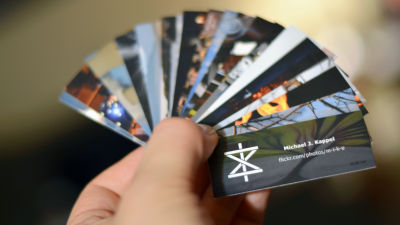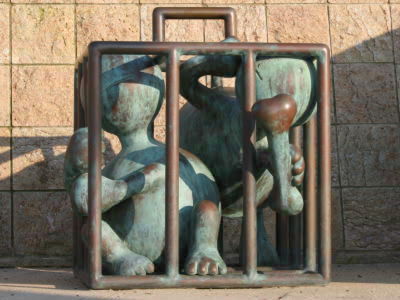How are '-', '--', and '-' used in English-speaking countries?

Dictionary publisher Merriam-Webster has compiled information on the usage of the em dash (—), en dash (–), and hyphen (-) in English writing.
How to Use Em Dashes (—), En Dashes (–) , and Hyphens (-) | Merriam-Webster
◆M Dash
Em dashes function like commas, colons, or parentheses and are used to separate examples, explanations, or additional information.
- Used to indicate a sudden change or interruption in sentence structure
Mabel the Cat was delighted with the assortment of pastries the new bakery featured, but Harry the Dog—he felt otherwise, for the bakery did not offer Danish cheeses at all.
Although it sounds a little unnatural in Japanese, if we emphasize the role of the em dash, it becomes, 'Mabel the cat was delighted with the selection of pastries at the new bakery, but Harry the dog was not so impressed , because the bakery didn't have any cheese danishes.' The bolded commas are the em dashes.

- Pauses in speech or indicates confusion or hesitation on the part of the speaker
“Of course you have a point,” Mabel murmured. “That is—I suppose it is concerning.”
In this sentence, an em dash is used to express Mabel's hesitation: ''Of course you're right,' muttered Mabel. 'I mean ... I think it's a concern.''
・Cases where it can be used instead of commas or parentheses
The bakery's significantly broad hours of operation—6 am to 6 pm—certainly showed concern for customers' manifold circumstances.
In this sentence, the em dash acts as a parenthetical and translates into 'The bakery's long hours ( 6am to 6pm ) show consideration for the different circumstances of its customers.'
- Used as a stand-alone replacement for a colon or semicolon when the clause following the em dash explains, summarizes, or supplements the previous clause in a somewhat dramatic way.
Harry would never forget the Tuesday that Mabel called him from the bakery, her voice brimming with excitement—the bakery had added cheese Danishes to its selection.
In this sentence, an em dash is used to emphasize that the last sentence is the reason for Mabel's excitement: 'Harry will never forget Mabel's call from the bakery on Tuesday. Her voice was full of excitement. The bakery had added cheese danishes to their selection.'

- When inserted before the author or source name of a quotation that is not part of the main text
“One cannot overestimate the effect that a good bakery can have on a person's well-being.” —Mabel the Cat, quoted in The Websterburg Reporter
The em dash is used here to indicate that the phrase enclosed in double quotation marks is a quote from Mabel the Cat's book, 'The Websterburg Reporter.'
Used to indicate that a letter is missing from a word. Two em dashes in a row indicate that part of a word is 'obscured' by the em dash.
The butter-stained and crumb-embedded note was attributed to a Ms. M—— of Websterburg.
Three em dashes in a row indicate an omitted word or an unknown word or number.
Years later it was revealed that the Websterburg bakers had once had a bakery in ———, a city to the south. But the water quality there was prohibitive to the creating of decent bagels.

◆En dash
En dashes are used to indicate ranges of numbers, date periods, etc. In English, en dashes are used when Japanese would use a wave dash, such as 'pages 128 to 134.'
The exceedingly complex recipe spans pages 128–34.
En dashes are also sometimes used to form compound words.
the pre–Websterburg Bakery era
Basically, a hyphen is used when adding the prefix 'pre-', but to avoid misleading readers into thinking that the prefix only applies to 'Websterburg', it is recommended to use an en dash when creating a compound word with multiple words. In other words, an en dash is used instead of a hyphen to indicate that it is 'pre–Websterburg Bakery' rather than 'pre-Websterburg'. However, it is said that there is little chance that readers will be confused by this in practice.

◆ Hyphen
Hyphens are the most commonly used in sentences because they have such a wide range of uses, including acting as an em dash or en dash.
Used to connect elements within a compound word
baker-owner
- When used to separate a prefix, suffix, or intermediate element from the rest of a word
Websterburg's pre-bakery days
A bread-like scone
jack-o'-lantern sugar cookies
- In the same way as an en dash, it indicates a range of numbers or dates.
Pages 128-34
the years 2007-2019
- Cases where words can be separated at the end of a line
Mabel and Harry don't like to linger on their memories of Webster-
burg's pre-bakery days.
- Cases where the person is expressing stuttering, sobbing, or speaking in a disjointed manner
'Mm-mabel, the cheese Danish is divine!'
In this sentence, the hyphen expresses that the speaker is choked up with excitement when he says, 'M - m - Mabel, these cheese danishes are amazing!'

・Used to express emphasis by dividing sounds
Let's not even talk about August, when the bakery is closed.
In this example sentence, the nuance is something like , 'I don't even want to talk about August because the bakery is closed .'
In a Hacker News thread discussing this article, one user offered the following advice: 'It's not exactly accurate, but it's easy to remember that hyphens connect compound words, en dashes show the scope of things, and em dashes separate sentences or thoughts.'
Related Posts:
in Note, Posted by log1l_ks







